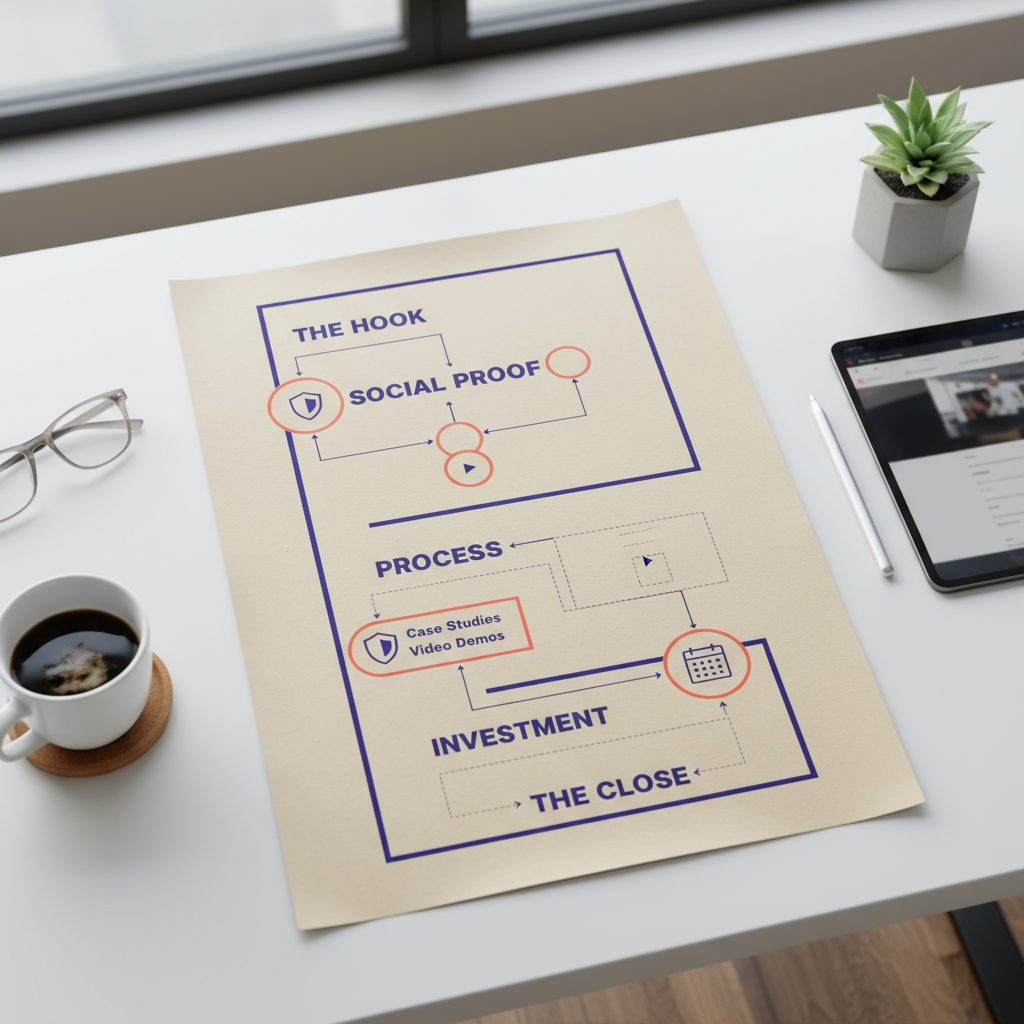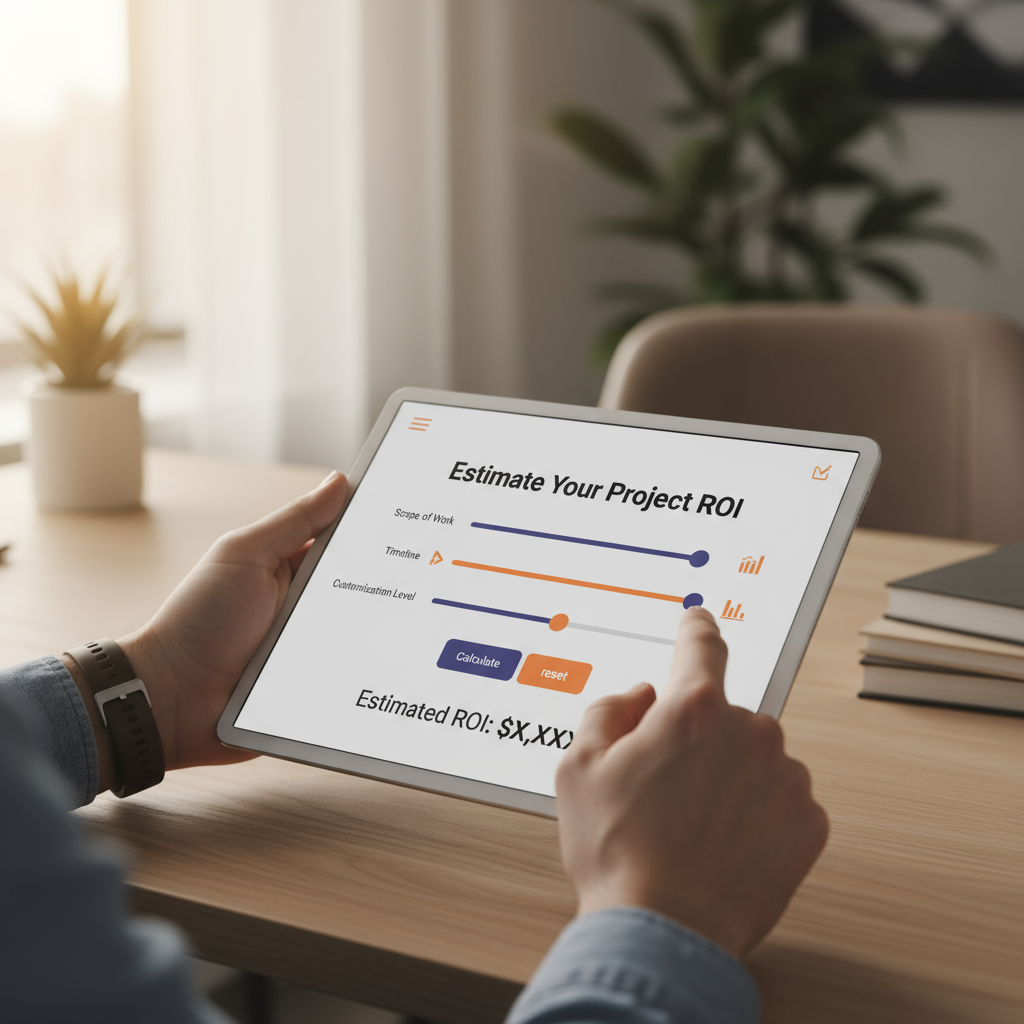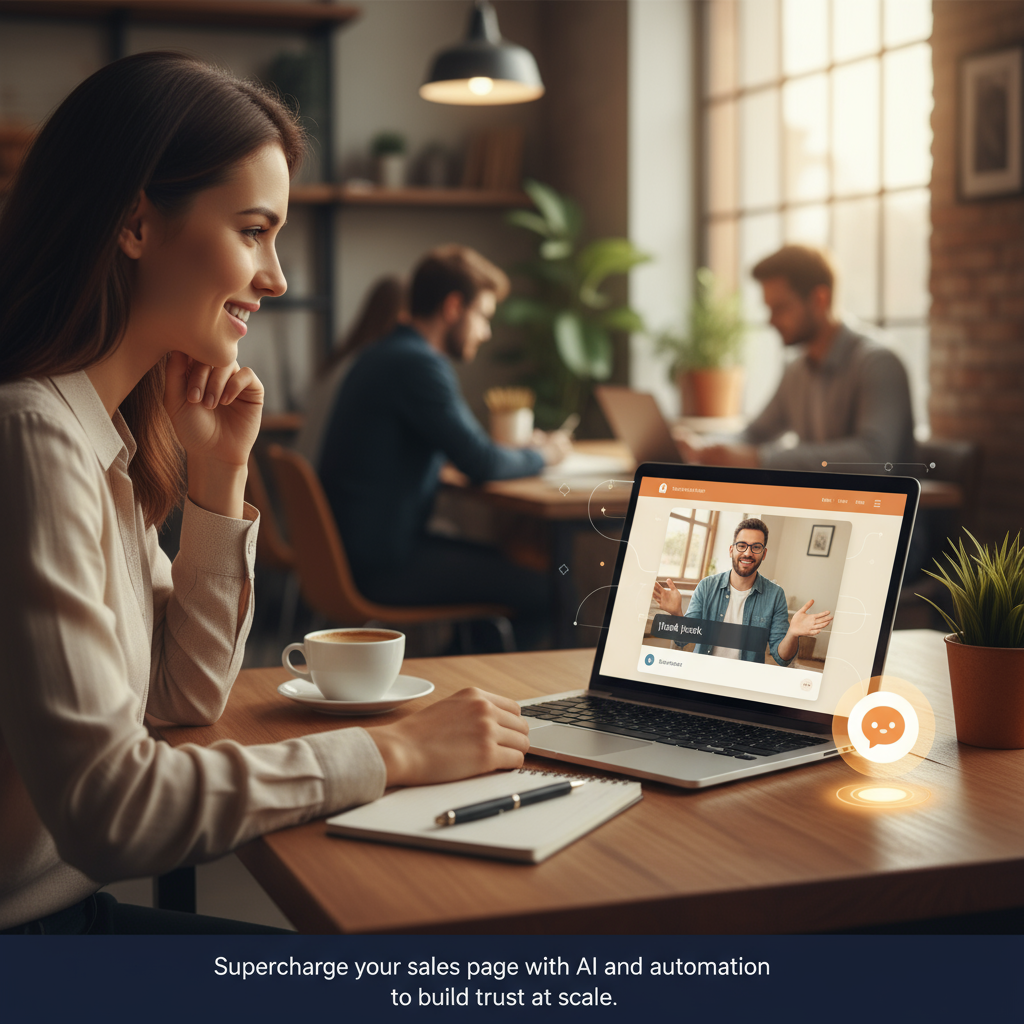You just spent four hours crafting the perfect proposal. You detailed the scope, showcased your value, and hit send... only to be met with silence. If you're tired of pouring your energy into documents that disappear into the void, it's time for a new strategy. What if you could replace that entire process with a single, smart landing page that does the selling for you, 24/7?
This isn't about building another static portfolio. It's about creating an automated system that anticipates client questions, demonstrates your value, and guides them directly to a booked call. Let's build the page that turns prospects into partners.
Key Takeaways: Your New Sales Engine
- Automate Your Sales Cycle: Replace manual proposal writing with a dynamic page that qualifies, educates, and converts visitors automatically.
- Answer Questions Before They're Asked: Use interactive elements and AI to proactively address client concerns and build trust faster.
- Sell Outcomes, Not Hours: Structure your page to focus on the value and transformation you provide, moving away from commoditized time-based billing.
- Integrate Modern Tools Seamlessly: Embed everything from interactive demos to scheduling tools, creating a frictionless path from interest to invoice.
- Close Higher-Value Clients: A professional, automated experience signals expertise and attracts serious clients who are ready to invest.
 Your landing page should be a strategic tool, not just a digital brochure.
Your landing page should be a strategic tool, not just a digital brochure.
Why Your Old Portfolio Isn't Closing Deals
Most freelancer websites are digital resumes. They list services, show past work, and end with a hopeful "Contact Me" button. This is a passive approach. A client-closing landing page is fundamentally different—it's an active sales tool designed for a single purpose: to get a specific type of client to take a specific action.
A portfolio is a gallery; a closing page is a guided conversation. It anticipates the client's journey, answers their questions in a logical sequence, and makes it incredibly easy for them to say "yes." This is the core shift needed to stop chasing leads and start attracting committed partners.
The Proposal-Page Framework: A 5-Part Structure
To turn your page into a closing machine, you need a narrative. This framework guides a potential client from skepticism to certainty, answering all their critical questions along the way.
Part 1: The Hook - A Hyper-Specific Value Proposition
Your headline must speak directly to your ideal client and their most pressing problem. Generic titles like "Freelance Web Developer" won't cut it. Instead, focus on an outcome.
- Before: "Graphic Designer for Hire"
- After: "I Design Pitch Decks for SaaS Startups That Secure Series A Funding."
This specificity immediately qualifies the right visitor and repels the wrong ones, ensuring you only talk to high-intent leads.
Part 2: The Proof - Case Studies & Tangible Results
Go beyond a few nice testimonials. Showcase 1-3 mini-case studies that demonstrate your ability to deliver results. Use the "Problem-Solution-Result" format and quantify the outcome. Did you increase their leads by 40%? Did you cut their onboarding time in half? Use real numbers to build undeniable credibility.
Part 3: The "How" - Your Process & Micro-Demos
This is where you demystify your work and build massive trust. Don't just show the final product; reveal the process. Use a simple 3 or 4-step graphic to illustrate your workflow. Even better, embed a "micro-demo" using a tool like Tango or Walnut to create a clickable walkthrough of your deliverable or process. Let them see exactly how you operate—it eliminates risk and makes hiring you feel like a safe bet.

Part 4: The Investment - Interactive Packages & Pricing
Static pricing tables can create more questions than answers. Instead, guide clients to the right solution. You can structure this as "Good," "Better," "Best" tiers or use an interactive quiz built with Typeform or Outgrow that asks a few qualifying questions and then recommends the perfect package. This turns pricing from a point of friction into a consultative experience. For more on this, check out our guide on creating a productized service page.
Part 5: The Close - The Automated Next Step
The final step should not be a generic contact form. The goal is to close the loop. After a client selects a package or completes your quiz, embed a scheduler from Calendly or SavvyCal directly on the page. The call to action is clear: "Book Your 15-Minute Project Kickoff Call." This single action transforms a passive lead into a scheduled meeting on your calendar, no back-and-forth emails required.
Your professional presence should do more than just exist—it should close deals. Build your own Client-Closing Landing Page with Livesume's AI-powered website builder. Turn your page into your best salesperson.
Supercharge Your Page: AI and Interactive Tools to Automate Trust
A great structure is the skeleton, but modern tools provide the muscle. Integrating AI and interactive elements can dramatically increase your conversion rates by adding a layer of personalization and engagement.
Consider the impact of a personal touch. Instead of an automated confirmation email after someone books a call, use Loom to embed a short, personal "thank you" video on the confirmation page. You can pre-record a 30-second clip saying, "Hey, thanks for booking a call! I'm excited to learn more about your project. Here's what to expect next..." This simple step builds immediate rapport and reduces no-shows.
This is a perfect example of an AI-powered digital portfolio doing the heavy lifting. It uses smart automation to create a better human connection, a key strategy we explore in our AI Client Acquisition Engine guide.

FAQ: Your Questions on Client-Closing Pages, Answered
1. Can a landing page replace a traditional proposal?
For most service-based work, absolutely. Your landing page answers every question upfront—what you do, how you work, what it costs, and what happens next. The client gets clarity instantly instead of waiting days for a custom PDF. For complex projects, use it as a qualifier before investing time in detailed proposals.
2. What's the difference between a portfolio and a client-closing page?
A portfolio shows your past work. A client-closing page shows how you'll solve their future problem. One is a gallery, the other is a guided sales experience with clear next steps.
3. How do I sell services without custom proposals?
Package your services into clear tiers with defined deliverables and pricing. When clients can compare options and self-select what fits their needs, you eliminate endless back-and-forth. They choose, you deliver.
4. Should I show pricing on my landing page?
Yes. Transparency filters for serious buyers and prevents wasted discovery calls. Use tiered packages (Basic, Standard, Premium) or show starting prices for custom work. Add a calculator or quick qualifier form for precise quotes.
5. What interactive elements actually convert?
Tools that provide immediate value: ROI calculators that show potential returns, short quizzes that diagnose their needs, or mini-demos of your process. If it helps them make a better decision or solves a small problem upfront, it builds trust.
6. How do I automate client intake?
Create a simple flow: qualification form → auto-schedule → CRM entry. When someone submits your contact form, automatically route qualified leads to your calendar and less-qualified ones to email nurture sequences. The tech doesn't matter—the seamless experience does.
Turn Your Page Into Your Best Salesperson
Building a client-closing landing page is a one-time investment that pays dividends indefinitely. You stop trading time for maybes and build an asset that generates qualified, high-intent leads for your business. It’s time to move from being a service provider to being a business owner.
Here’s how to start:
- Map your framework: Use the 5-part structure above to outline the narrative for your page. What is the hook? What is the proof?
- Audit your tools: Identify one or two interactive tools you can implement immediately. Start with an embedded scheduler—it’s the highest-impact change.
- Build your page: Use a platform designed for professionals, like the Livesume professional page builder, to bring your vision to life without needing to code.
Stop the proposal grind. Build your client-closing engine today and let your webpage do the work for you.